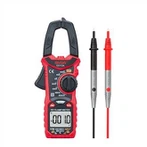Three components make up the pH meter's structure.
1. A reference electrode;
2. A glass electrode whose potential depends on the pH of the surrounding solution;
3. A galvanometer capable of measuring small potential differences in a circuit of great resistance.
The following are the main functions of each component:
1. The basic function of the reference electrode is to maintain a constant potential as a control for measuring various deviation potentials. The silver-silver oxide electrode is currently the most commonly used reference electrode in pH.
2. The function of the glass electrode is to establish a potential difference that responds to changes in the hydrogen ion activity of the solution being measured. Put the pH-sensitive electrode and the reference electrode in the same solution to form a primary battery, and the potential of the battery is the algebraic sum of the potential of the glass electrode and the reference electrode. E battery = E reference E glass, if the temperature is constant, the potential of this battery changes with the pH of the solution to be measured, and it is difficult to measure the potential generated by the battery in a pH meter because the electromotive force is very small and the circuit The impedance is again very large 1-100MΩ; therefore, the signal must be amplified enough to drive a standard millivoltmeter or milliampmeter.
3. The function of the ammeter is to amplify the potential of the primary battery several times. The amplified signal is displayed by the ammeter. The degree of deflection of the pointer of the ammeter indicates the strength of the signal it pushes. For the needs of use, the dial of the pH ammeter is engraved with The corresponding pH value; while the digital pH meter directly displays the pH value in numbers.






